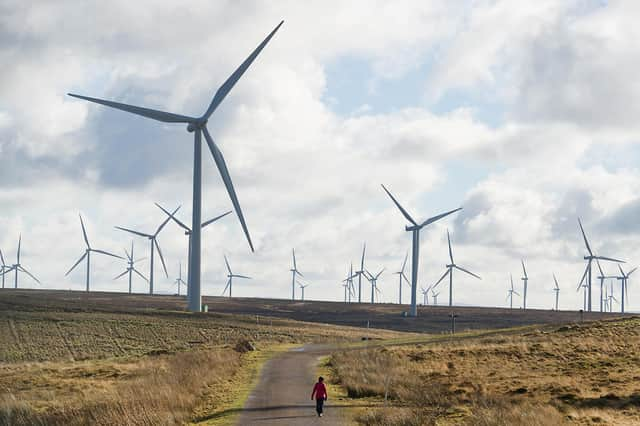North-south divide threatens green energy investment


The concern centres on the way charges are levied for using the GB-wide electricity transmission system which makes it more likely that projects in heavily populated areas will receive backing under a renewable energy subsidy scheme.
Adam Morrison, project director of the proposed Moray West offshore wind farm off the Aberdeenshire coast, has now called for immediate reform to address the problem.
Advertisement
Hide AdAdvertisement
Hide AdHe argues the current mechanism – known as Transmission Network Use of System (TNUoS) charges – risks making projects that are more distant from population centres prohibitively expensive as it increases costs to generators depending on how far they are from the big demand centres in the south-east of the UK.
Higher costs for northern generators makes it more difficult to win subsidy support under the Contract for Difference auction system developed by the UK government where only projects bidding the lowest price to produce power win backing.
Morrison said the financial burden of grid charges which were affordable when renewable prices were high becomes uneconomical at the sub-£50 per megawatt hour (MWhr) level seen in the last CfD auction in 2019 after huge industry progress on cutting costs.
“When renewables were £150MWhr, TNUoS represented only about 4 per cent of the cost per unit generated in the north, and could be absorbed,” said Morrison.
But the falling cost of offshore wind has meant TNUoS charges now represent a much greater burden of around 17 per cent, making northern projects more expensive compared with projects in the south.
“New projects in the north, which like Moray West have planning consent and are ready to provide benefits, are becoming stranded on the drawing board just because of their location,” said Morrison, who was head of electrical at sister site Moray East which is now under construction.
“Reform is needed now to encourage, rather than discourage, the development of renewable resources where they are found.”
Morrison’s comments came in an article published by Scottish property consultancy Galbraith’s energy magazine.
Advertisement
Hide AdAdvertisement
Hide AdPartner Richard Higgins said: “The Crown Estate in Scotland has recently opened the bidding process for the next round of offshore windfarm projects.
“As offshore wind has become increasingly competitive, all aspects on the project and operational cost side, including TNUoS, will be vital in determining project viability.
“The wider returns to the developers, supply chain and local as well as the Scottish economy to an extent hinge on a more level playing field.”
A message from the Editor:
Thank you for reading this story on our website. While I have your attention, I also have an important request to make of you.
The dramatic events of 2020 are having a major impact on many of our advertisers - and consequently the revenue we receive. We are now more reliant than ever on you taking out a digital subscription to support our journalism.
Subscribe to scotsman.com and enjoy unlimited access to Scottish news and information online and on our app. Visit https://www.scotsman.com/subscriptions now to sign up.
By supporting us, we are able to support you in providing trusted, fact-checked content for this website.
Joy Yates
Editorial Director
Comments
Want to join the conversation? Please or to comment on this article.